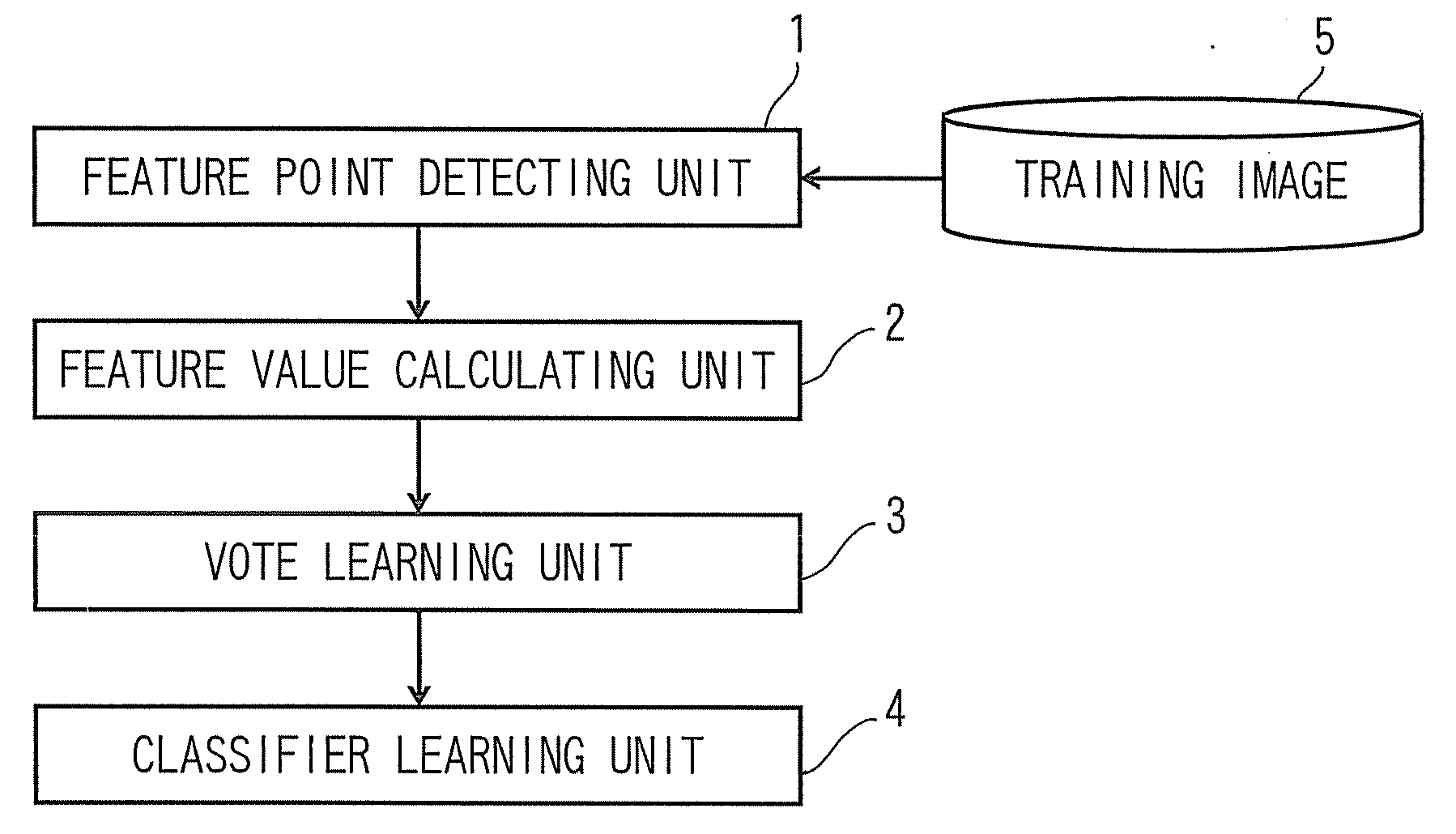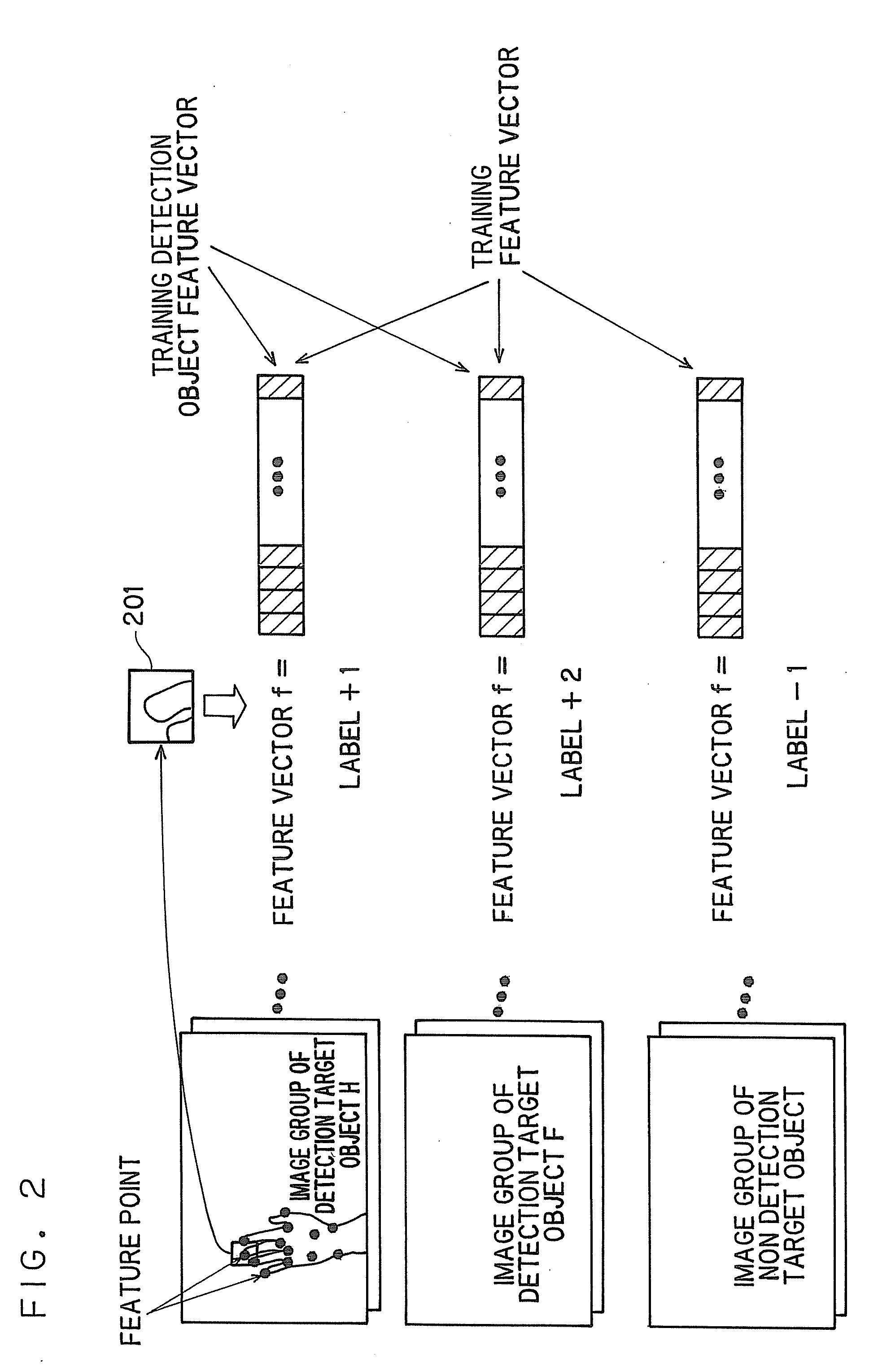Learning apparatus and object detecting apparatus
a learning apparatus and object detection technology, applied in the field of learning apparatus and object detection apparatus, can solve problems such as lowering detection accuracy, and achieve the effect of high degree of accuracy and high degree of accuracy
- Summary
- Abstract
- Description
- Claims
- Application Information
AI Technical Summary
Benefits of technology
Problems solved by technology
Method used
Image
Examples
first embodiment
[0023]Referring now to the drawings, a learning apparatus and an object detecting apparatus according to a first embodiment of the invention will be described.
[0024]The object detecting apparatus according to the first embodiment discriminates whether feature points detected from an input image belong to a detection target object or not by a classifier. Then, voting is performed in a parameter space including a type and the position of the detection target object for the respective feature points discriminated as belonging to the detection target object to detect the detection target object.
[0025]The learning apparatus according to the first embodiment is configured to learn a voting position in the parameter space and the classifier configured to discriminate whether the feature points belong to the detection target object or not in the object detecting apparatus from training images.
[0026]Referring now to FIG. 1 to FIG. 5, the learning apparatus according to the first embodiment w...
second embodiment
[0102]Referring now to FIG. 9, the object detecting apparatus and the learning apparatus according to a second embodiment will be described.
[0103]Referring now to FIG. 9, the learning apparatus according to the second embodiment will be described.
[0104]The learning apparatus according to the second embodiment learns a second classifier in addition to the classifier including the plurality of random trees learned by the classifier learning unit 4 in the first embodiment (hereinafter, referred to as “first classifier”).
[0105]First of all, as shown in FIG. 9, as a result of discrimination of the training feature vectors via the respective random trees of the first classifier, the selected leaf node takes a value of +1, and the leaf nodes other than that take a value of 0, so that binary vectors g are obtained by concatenating the binary vectors from the plurality of random trees. Subsequently, the second classifier is learned by using the binary vectors g.
[0106]In other words, the bina...
third embodiment
[0112]Referring now to FIG. 10, the object detecting apparatus and the learning apparatus according to a third embodiment will be described.
[0113]As shown in the first embodiment, other classifiers may be used also in a case other than that where the plurality of random trees are used as the classifiers of the feature values. In the third embodiment, a case where a nearest neighbor classifier is used will be described.
[0114]Referring now to FIG. 10, the learning apparatus according to the third embodiment will be described.
[0115]In the learning apparatus according to the third embodiment, the classifier learning unit 4 splits all of the training feature values into k clusters by Vector Quantization Method such as k-means clustering.
[0116]The k-means clustering initializes each of the cluster using a randomly chosen vector data as an initial member of different cluster, and calculates an average of the respective clusters by this assignment. Distances between the respective vectors a...
PUM
 Login to View More
Login to View More Abstract
Description
Claims
Application Information
 Login to View More
Login to View More - R&D
- Intellectual Property
- Life Sciences
- Materials
- Tech Scout
- Unparalleled Data Quality
- Higher Quality Content
- 60% Fewer Hallucinations
Browse by: Latest US Patents, China's latest patents, Technical Efficacy Thesaurus, Application Domain, Technology Topic, Popular Technical Reports.
© 2025 PatSnap. All rights reserved.Legal|Privacy policy|Modern Slavery Act Transparency Statement|Sitemap|About US| Contact US: help@patsnap.com



